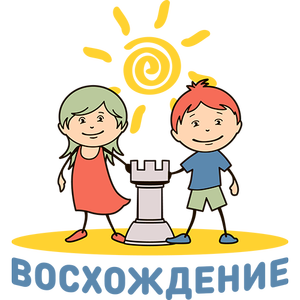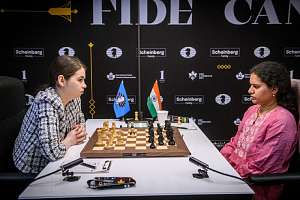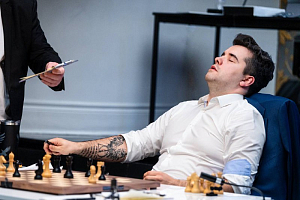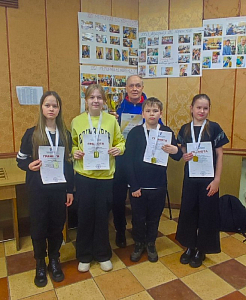A Champion in the New York Oblivion
Paying a visit to Wilhelm Steinitz’s tomb in the review of Anna Kaliayeva
As a matter of fact, May 14, 1836 is a birthday of Wilhelm Steinitz, the strongest chess player of his time, founder of the positional school and the first World Champion in the history of chess.
In lieu of a foreword
This story took place in November last year in New York when I was reporting for Rossiyskaya Gazeta (Russian Newspaper) from the World Championship Match between Magnus Carlsen and Sergey Karjakin.
To be more precise, my reporter’s epic was nearing its end, and my final day in the “Big Apple” happened to be relatively free of work. Upon giving it some thinking, I finally decided to hit the road… It was neither the Statue of Liberty, nor the Bloomingdales shopping, nor even a walk in the Central Park that I headed for...
However, let me describe things in their proper order.
Still fresh in the memory of many are the events of a much talked-about New York match between Carlsen and Karjakin. The journalists’ favorite joke back then was about every kettle whistling about the match.
The match’s aftermath has not stopped even now. Sergey Karjakin, who has become easily recognizable to the general public since then, was watching you from everywhere - underground billboards, banners, public transport, etc. Chess has hit the mass media once again after what seems to have been a lapse of ten years. The journalists have again fallen to writing about the ancient game and have become nearly experts when narrating about new series of Grand Prix stages, while trying not to miss out on any nuances related to the line-up shaping for the upcoming Candidates Tournament, let alone the most important event having to do with singling out the next, possibly a new challenger to the World Champion’s title.
It needs no further repeating that the successful PR company around the match was largely contributed into by a precise selection of its venue, New York. This is a city of celebrities and red carpets, brightest films and theater premieres. Being a non-national megapolis, the city is a source of unlimited opportunities to people from all over the world. The opening ceremony of the 55th edition of the chess crown contest took place in the famous Plaza Hotel and became a landmark gala event that brought together politicians, actors, singers, as well as English-speaking audience numbering some 1.8 million. The city is an indisputable chess center, especially since out of 54 world championship matches, held in the span of 130 years, the crown owner was determined in New York as many as 6 times (including the 1990 epoch-making Kasparov-Karpov match in terms of its further influence on the modern chess). Reinforcing the city’s chess identity is also the fact that living here, playing chess, working and passing away were the first two world champions - Wilhelm Steinitz and Emanuel Lasker.
In this respect, New York is rivaled only by Moscow, which hosts tombs of three out of ten now-deceased world champions: Mikhail Botvinnik, Vasily Smyslov and Tigran Petrosian.
What are the reasons that set me in motion, after all?
I have never known myself as a person taking much interest in pilgrimage. However, I have always believed it only natural to exhibit a certain amount of reverential attitude, or, rather, serious attention to burial sites of great people as universal monuments of culture. It has probably come down to me from my mother, a local historian and expert in sculpture and architecture. Last summer, while she and I were in Paris on Montparnasse, I remember us looking for the tombstone of a musician César Franck (the work of no other person than Auguste Rodin!). It was purely accidental that we came across the tomb of Alexander Alekhine. A year later, while in Amsterdam, I was lucky to find myself in front of Max Euwe’s monument, installed next to the chess center bearing his name, and even play a couple of games with elderly regulars of this small European chess spot.
From then on, when going on trips abroad, I would populate my list of places of interest with locations of monuments and tombs of champions and renowned chess players, just in case. All in all, there cannot be too many of them in any city that fate could bring you into.
It goes without saying that when you are a first-timer in New York and for a couple of weeks only, paying visits to such places is far from your top must-see priorities. However, since my trip turned into a full-fledged chess tour, and the well-known chess sites -- The Marshall Chess Club and Washington Square Park -- were marked on my list as already familiarized with, I made up my mind to deal with the next items of my preplanned route. I embarked upon the mission without any clear understanding as to why I should go for it, but not without a certain share of excitement peculiar to a person who is a mix of a tourist and a chess player.
A close proximity between the objects of interest added to my encouragement to make this small sortie. It turns out that the Steinitz and Lasker tombs are located on adjacent cemeteries, united into a single picturesque territory by the large (the size of Manhattan’s Central Park) Forest Park in Brooklyn and Queens.
Not regretting the volume of phone memory taken up for downloading the Uber-taxi application and the amount of $35 for travel expenses, I got up early on Saturday morning and I headed for the Jewish cemetery Beth-Olam, a rest place of Emanuel Lasker, in taxi driven by a talkative driver of Dominican Republic descent. Steinitz’s grave of is only a mile and a half from Beth-Olam, if you choose to go by foot.
Alas, if you have taken careful note of the timing of my sortie and know the Jewish traditions better than I do, you should know by now that Shabbat stepped into the matter and was inexorably merciless to my naive plans. Each Saturday sees a tiny Jewish cemetery, surrounded by a tall stone fence, completely soulless and its gates locked on a huge padlock.
I went back and forth for a couple of minutes in vain attempts to spot a watchman or a caretaker and gave myself a slight scolding for a poor planning, thinking to myself "How have I ever subscribed for this after all?” Nevertheless, having cleared my minute doubts, I decidedly started off by foot towards my second destination, completely oblivious to the opportunity of getting there by taxi without any delay...
Even though my Google navigator predicted me a 30-minute walk, it actually took me an hour to make it at my own pace. However, I never regretted the time spent. With +18 degrees outside and a carpet of freshly fallen leaves crisping pleasantly under my feet, the New York’s late November was much like a fast-passing golden time of the Moscow autumn known as "Indian summer", which we never have time to enjoy, if it happens at all. The life outside of Manhattan seemed completely different from that of the city center, as if it were more "earth-bound”, so to speak. The Forest Park had locals gathered for picnics, playing American football, walking out their pets or just seated right on the grass with their books in hands.
It was already about noon when I noticed the big beautiful sign reading The Evergreens Cemetery. The beauty of the landscape made me as happy as the fact that the cemetery was open to visitors. Recalling how unsophisticated it was with Alexander Alekhine when his name just caught my eye out of the information board of the Montparnasse cemetery, I expected to pinpoint the site on the map and just go there equally easily. There was no end to my surprise when the walk along the main avenue made me realize there were simply neither indices nor lists of known people buried there (although the cemetery sets itself up as a cultural asset). The only wooden board displaying an overall map at the entrance is absolutely meaningless since it carries no other information but sector names (with no dates to help orient around the place) and an arrow pointing to the office building location. Searching data on Internet helped my cause not in the least. This time I reprimanded myself heavily for having started all this and took resolute steps towards the Evergreens’ office building. “Saturday 9:00 AM to 11:00 AM”. I wish everyone had a work schedule like that! I look around and take notice of several groups of Chinese tourists move about the territory as if in some sort of confusion as well. Sometimes a police car passes by, which would give you no guiding tips, however.
When I decide to waste my time no longer and start for the exit, a pickup truck with the Evergreens emblem suddenly turns up as if out of nowhere.
A man aged about 55 calls out from the driver’s cabin through the lowered window:
“Can I help you?”
“Yes, please. I am looking for the grave of Wilhelm Steinitz”, I reply, reluctantly.
“Could you come again, please?!”
“Wilhelm Steinitz”, I rattle off with as much English pronunciation as lies in my power.
“The chess player? Do you mean it?”
“Yes, I do”.
“No problem, let’s go!”
Before I am halfway through buckling up my seatbelt, this somewhat cartoon-looking person hands me a paper with a site map on it (bearing all necessary data!).
“Are you a chess fan or something?”
“I cover the New York match as a journalist… Have you heard about the match?”
“I have, indeed. I expected some famous chess people to come visit us. However, nobody has…And you are a journalist, right? You are into luck to have run into me! I saw you were about to leave. My name is Donato. I have been working here for thirty years now. Here we are! You are welcome, Mr. Grandmaster!”
They ask about the champion’s whereabouts on a monthly basis.
Looking at a small clearing with low widely-spaced tombstones, I realize that neither a strong desire nor a lot of footwork along the cemetery paths would have ever helped me locate the grave of Steinitz unaided. It should be added, however, that the alley has a marker pointing to his burial site. It reads, “Here lies Wilhelm Steinitz, the first world chess champion. In memory of my ancestor from his descendant Kurt Landsberger."
“Let’s go”! – Donato urges me towards the destination
A clean and well-groomed lawn accommodates a very modest and inconspicuous cubic - shaped monument no higher than 100 cm. No pomposity iа compared to the above-mentioned tomb of Alekhine in Montparnasse. The headstone lettering is hard to read. The dates and the inscription "Here lies in peace Wilhelm Steinitz" are engraved in his native German language. The statement of the chess player's birth year is wrong – 1837, which should be 1836. As it turned out, the funeral of the first champion, who died in poverty, was organized by the German club of journalists, which Wilhelm Steinitz was a member of. Later on this very club helped erect the monument.
“This is one of the oldest parts of the cemetery, - Donato continues. Look at it (points out to the headstone), the time has taken its toll. Nevertheless, if you examine it at close range, you can still make out the outline of the chess board. There is something else on it that just resists the naked eye. Well, give me a moment”.
Taking inspiration from my enthusiasm, Donato takes a quick run towards his pickup truck to fetch a wide blue roll of tracing paper and a tennis ball.
“I will need your help, however; please keep the paper from shifting”.
Donato places the tracing paper over the headstone and gives it a slight pressure from the tennis ball, which indeed makes the chess pieces on the board stand out.
I distinguish between three beautiful chessmen’s shapes of an indeterminate color: Qa8, Rd5 and Ke4. This is clearly not a real game setup. A fragment of it, at best, or, rather, the fruit of the sculptor’s imagination.
“It was the last game he played, Donato informs me. – Do you know about his last days insanity and that he challenged God for what proved to be his last game? He lost, obviously... Here, take it, it will be a gift to you from New York”, - Donato hands me the scroll.
It is worth noting that my day continued with shopping and visiting the Statue of Liberty. I had to carry the scroll along with me, but now it is safe and sound behind the glass frame of our chess club’s mini-museum.
“Do you like our city? Will you stay here for a long time yet? – Donato asks me. I explain that I am to leave tomorrow, although I do not want to since I have come to like the city so much”.
“Oh, damn it!”, he exclaims.
“You should then go to... Here, just a mile off from here lies a man who stripped Steinitz of his world champion title. You probably know him. His name is Emanuel Lasker”.
Well, if only Donato knew that it is Lasker who I keep thinking about all this day!
“The thing is, they keep opposing each other even now”.
“How is that?”
“You see... (Donato gets into figuring out where north and south are). That’s it! I do not know if it came about on purpose or by chance. They used to be rivals during life and now they lay opposite each other... You are very lucky, he continues, I have been an employee here for 30 years and I know everything about the place”.
“Whose memory do they come to honor most often here?” - I ask.
“I think it is Bill Robinson, the dancer”.
“Do they inquire about Steinitz’s grave location often?”
“Not often, but on a regular basis. They never put flowers on his grave, which cannot be said about the dancer. They ask about Steinitz once a month. Now your turn has come”.
“Only once a month?! This is the first world champion after all! And who would it usually be - chess players or relatives?”
“Usually it would be just some curious people”.
As it turned out, the signboard pointing to Steinitz’s grave was put in place by Kurt Landsberger relatively recently, a couple of decades ago. It is now difficult to determine whether he was Steinitz’s descendant after all (Landsberger is primarily known as a chess player’s main biographer). Following the first world champion’s death, his wife would give a different surname to the census people.
On the way back, Donato gives me his business card and welcomes me to phone him should I have any questions to ask.
“By the way, I did take part in gathering material for the book. My name was mentioned in three newspaper articles”.
“I bet there was not a single Russian newspaper out of those three, was it?”
“No, never the Russian ones! If it ever comes to writing an article, please send me a copy. I will reimburse the postage expenses. It will make me very happy!”
A scarestory is just the thing to wrap up the article.
On the way back to the exit gate Donato challenges me with an unexpected question.
“Anna, do you believe in ghosts?”
“I do not think so”, I answer.
“Well, I had to face it once... See this sector? (He points out to it with his finger). It is inhabited by ghosts. A woman committed suicide here at the cemetery during the Civil War after having lost her husband. Back then, the American women were deprived of any civil rights and a loss of their husbands would render their lives meaningless. Since then, many women followed suit. Even some 15 years ago we would still come across poison vials here and there. However, we tried to hush the matter to the best of our abilities since this is no good for the cemetery’s reputation. Who would be willing to lay their relatives to rest here with such things happening? Nevertheless, the first woman who took poison keeps appearing from time to time. I've never seen her, but I heard her cry”.
“Another instance occurred some 5 years ago, continued Donato, apparently eager to deliver a final impression on me. I saw a weeping girl here. When I approached her she told me about her difficult life situation and her willingness to do away with herself. I tried to reassure her and gave her my business card, saying that we have a helpline operating for people in need of help. I gave her a lift to the gates. She vanished as soon as she was out of the car, which scared me. When I returned to my office colleagues, they told about seeing me ride unaccompanied. Well then, the ghost has my card now!”, he says laughing.
Later on, when I was back at my Moscow apartment, I retrieved Donato’s card to look up his cemetery’s website for what I have heard from him. It turned out that those ghost narratives belong to the Evergreens’ cemetery trademark gimmick, which is of an advertising rather than intimidating nature. They even offer you thematic guided tours around the place.
“Being proud of your ancestors…”
“Does working in this place gives you a scare?”, I questioned Donato in the end.
“Why should I be afraid of the dead? It is the living I should be afraid of! The dead cannot harm you, but the living can”.
Despite being a commonplace reply, he is right. One may be in fear of a deceit, betrayal, or oblivion, which is even worse. People display tendency towards making full use of other people’s inventions and discoveries, while forgetting the ones who made them in the first place.
May 14 marked the 181th birthday anniversary of the great chess player, who starts the line of world champion portraits hanging on the walls of each self-respecting chess school or club. While biographical and other interesting facts of Wilhelm Steinitz’s life can be easily looked up on Internet, I have made up my mind to have this six-month-old event shared with you on this very day.
The below-given data may prove useful, should you find yourself in New York and decide to follow my route:
1. Emanuel Lasker’s grave –Beth-Olam Cemetery, 2 Cypress Hills St, Brooklyn, NY 11208, USA (every day but Saturday!)
2. Wilhelm Steinitz’s grave – The Evergreens Cemetery, sector Bethel Slope, № 5893 1629 Bushwick Avenue, Brooklyn, NY 11207 (Monday-Friday 8:30-16:00, Saturday 8:30-12:00) http://www.theevergreenscemetery.com/.























